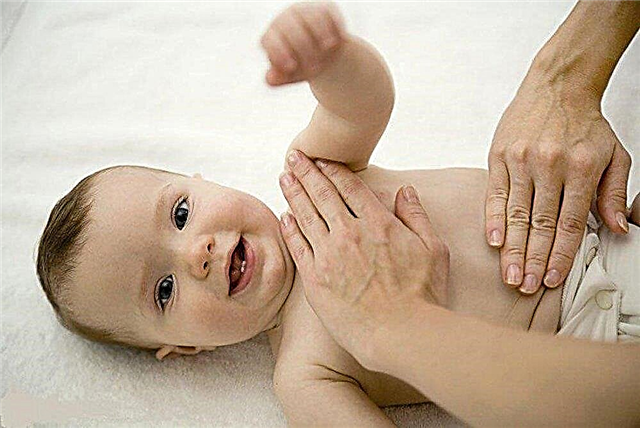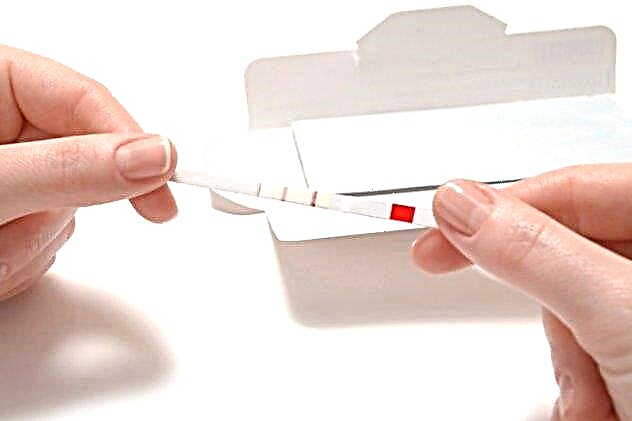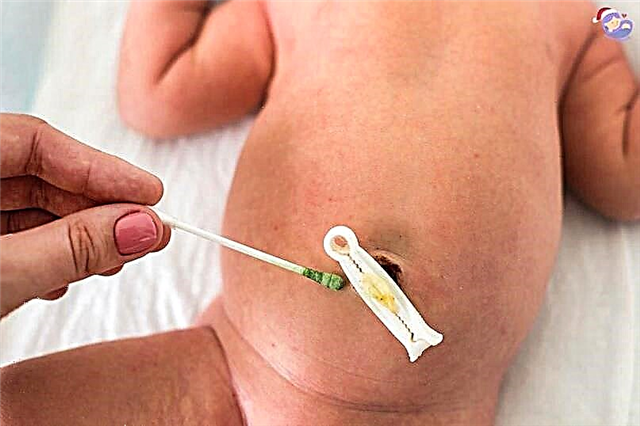
Skin rashes in babies occur for a variety of reasons. The appearance of watery acne on the body is an unfavorable symptom that can occur in a wide variety of pathologies.
This article will help you learn more about what parents should do when a baby has such skin rashes.

Reasons for the appearance
Water acne on the body can appear both in babies in the first years of life and in adolescents. They arise as a result of the influence of a wide variety of reasons.
Skin rashes look like vesicles containing liquid inside. The content of the watery blisters may vary. Usually it is a serous fluid or ichor with an admixture of blood.
With some bacterial skin pathologies, pus begins to appear inside the vesicles. This symptom is already extremely unfavorable and indicates a secondary infection.


Purulent contents can be seen from the outside. In this case, the color of the liquid inside the bubble changes. It turns yellow or green.
Watery blisters appear on the skin much more often in babies than in adults. This feature is due to the physiological structure of the skin layers in young children.
The imperfection of the local immunity function contributes to the spread of watery blisters throughout the body in a fairly short period of time. The size of these skin rashes can vary depending on what causes them.


The following reasons can cause the appearance of watery blisters on the skin of babies:
- allergic reactions;
- pemphigus;
- contact and diaper dermatitis;
- impetigo of staphylococcal etiology;
- childhood infections;
- prickly heat, hyperhidrosis;
- eczema;
- contagious molluscum infection;
- herpes infection;
- transferred infectious viral and bacterial infections;
- scabies;
- endocrine system diseases and chronic diseases of internal organs.


Quite often, watery pimples are accompanied by the appearance of other symptoms on the skin. These include: increased dryness of the skin, severe redness, inflammation and the appearance of numerous dense dry crusts.


The severity of adverse symptoms can vary. The duration of the preservation of skin rashes is influenced by numerous factors: the age of the child, the presence of concomitant pathologies of internal organs, the level of functioning of children's immunity.

Features of rashes in some diseases
Pemphigus
In infants, quite often the cause of the appearance of various bubbles filled with liquid on the skin is a disease called pemphigus. According to statistics, the peak of the development of this pathological condition falls on the newborn age.
This pathology can occur in both benign and malignant forms. An unfavorable variant of the disease is also called Ritter's exfoliative dermatitis.
A baby can become infected with this skin disease during medical procedures that are carried out in violation of hygiene rules, or from a mother who has some kind of purulent pathology.
Mass cases of infection occur when babies are infected at the hands of medical workers. A specific clinical sign of this skin pathology is the appearance of numerous bubbles on the skin of an infected child.


They are usually quite small in size and are located in groups on the body. The skin around these rashes becomes bright red in color. In some cases, it becomes hot to the touch.

There is a large amount of serous fluid inside the vesicles. With a severe course, purulent formations appear.
Preferential localization - on the stomach or near the navel, on the legs, as well as in the skin folds. Over time, these skin rashes disappear.
Residual symptoms usually appear as patches of depigmented skin that also resolve within a few weeks. In some babies, such bubbles can appear on the oral mucosa.

Chicken pox
"Chickenpox" is another fairly common cause of various skin rashes on the child's skin. They usually look like numerous watery bubbles.
The liquid component in them is a serous cloudy liquid. Chickenpox is characterized by a rather severe course, accompanied by an increase in temperature and severe symptoms of intoxication.
Blisters on the skin with this childhood infection appear gradually. In a few days after the onset of the disease, they almost cover the entire surface of the body.

Watery bubbles can be seen on the back, arms, face, legs of the baby. In some cases, they can burst, and the liquid contained in them flow out. The appearance of such skin elements can be accompanied by the development of severe itching in the sick child.
Babies attending educational institutions are more susceptible to infection with this infection. Only timely vaccination will help protect a child from contracting this infectious disease.
Chickenpox is a quarantine disease. The peak incidence occurs at the age of 2-6 years.

Diaper dermatitis
This pathological condition occurs in newborn babies and very young children. The name of the disease contains the reason that causes these symptoms to appear in the smallest patients.
Wearing diapers leads to the appearance of watery bubbles on the child's bottom. Direct contact of the baby's perineum with the absorbent layer of the diaper leads to the development of contact allergic inflammation, manifested by the appearance of numerous skin rashes on the skin.


For quite a long time, this pathological condition in babies was called diaper rash. The use of this term to denote the essence of the disease is also possible.
The prevalence of this pathology in babies is quite high. According to statistics, every second newborn baby during the first year of life may face this pathological condition.
This pathology manifests itself on the skin by the appearance of multiple watery bubbles. They are usually located on inflamed areas of the skin.
The affected skin becomes bright red in color, and severe weeping appears. Prolonged inflammation leads to the development of swelling of the surrounding tissues.
Streptoderma
This pathology occurs as a result of infection with various types of streptococci and is characterized by the development on the skin of numerous bubbles filled with gray or pinkish liquid inside.
Streptoderma is a fairly common pathology in babies. This disease is contagious.
A healthy baby can get infected from a sick person. In this case, watery blisters can occur on a wide variety of skin areas. Quite often, they appear between the fingers, on the palms, on the stomach.
Often sick children and babies with immunodeficiency states are prone to streptoderma much more than children with strong immunity.

With the course of the disease, the color of the liquid inside the skin rashes also changes. At first it has a gray tint, then it can turn yellowish or green. This discoloration is a very unfavorable symptom and indicates the progression of the disease.
Over time, these watery bubbles burst, and the liquid flows out. Insufficient adherence to hygiene rules can lead to the development of dangerous complications.
True eczema
This pathology belongs to dermatoses. It is accompanied by the development of numerous blisters on the skin, which are very itchy. After opening the skin rashes, eroded areas remain.
This period of the disease is one of the most unfavorable. Microbes and bacteria can get into erosion, which contribute to the secondary infection of the wound.
The earliest manifestation of the disease is redness and swelling of the affected area. After a few days, bubbles appear on the inflamed skin, filled with bloody fluid inside. They come in a variety of sizes.
The development of eczema is often caused by exposure to chemicals, as well as a pronounced decrease in immunity and exacerbation of chronic diseases of internal organs.

After the disappearance of the bubbles with eczema, dense crusts remain on the skin, which gradually peel off. The lesions are usually clustered and tend to drain.
The child's well-being is significantly aggravated by pronounced itching, which often accompanies the appearance of numerous bubbles on the skin.
In some immunodeficiency conditions, eczema can become chronic. In this case, the appointment and implementation of complex treatment is required. It is not only necessary to eliminate adverse symptoms, but also to prevent new exacerbations of the disease in the future.

What to do when they appear?
If the baby has various watery pimples on the skin, then you should immediately consult a doctor. To establish the cause of the disease, it is often required to carry out a whole complex of diagnostics, which includes a wide variety of methods.

Such an examination is necessary, since there are a lot of diseases that occur with the development of watery pimples on the skin.
To establish the correct diagnosis for the baby, the following laboratory tests and studies are carried out:
- General analysis of blood and urine. They help to determine the viral or bacterial infections present in the child's body, as well as the severity of functional disorders.
- Biochemical blood test. It is necessary to determine the work of internal organs. Functional disorders of the liver, kidneys, gallbladder are well defined using this method.
- Sowing the discharge. The biological material for this becomes the liquid obtained from the bubbles. Bacterial culture allows you to establish the exact cause of the disease that caused the appearance of these rashes on the skin.

- Allergy testing. This study is carried out with any suspicion of a child's allergy. Such a laboratory test is carried out by a pediatric immunologist.
- Clinical examination of the skin. This study is carried out by a pediatric dermatologist. During the examination, the doctor identifies specific signs of a wide variety of dermatological pathologies, which appear with the development of watery pimples on the skin. In difficult clinical cases, the specialist will recommend consulting other doctors if the cause of the disease is any chronic disease of internal organs. Some infectious pathologies are treated by an infectious disease specialist.

- Dermatoscopy. This examination is carried out by a pediatric dermatologist using a special device. This study helps to examine all the layers of the skin in a more thorough way. Dermatoscopy is also performed for the differential diagnosis of many dermatological pathologies.
Treatment is prescribed individually, taking into account the cause that influenced the development of these adverse symptoms.
For the treatment of bacterial eruptions, modern groups of antibiotics are used, which have a fairly wide range of effects. The duration of the course of treatment is determined by the attending physician, taking into account the age of the baby and whether he has chronic concomitant pathologies.
Allergic forms of dermatoses are treated with antihistamines and anti-inflammatory drugs.

Why do watery acne appear on a child's body? Doctor Komarovsky will tell you about a baby rash.



